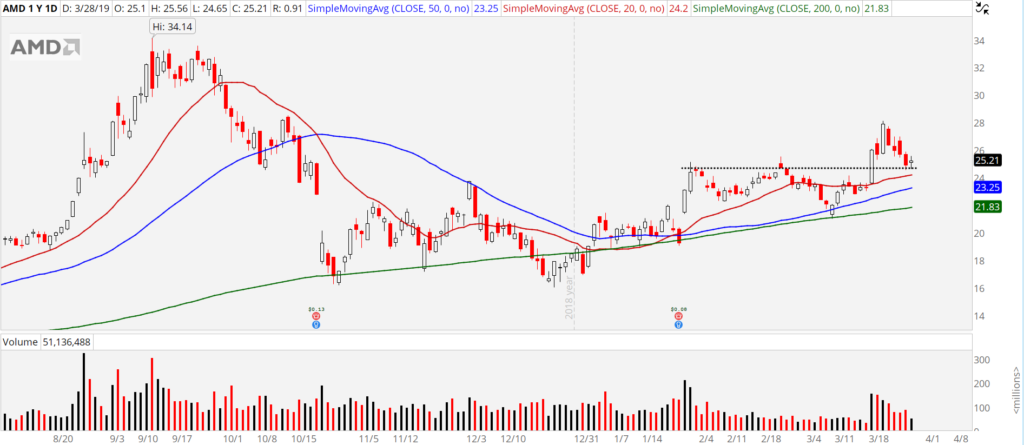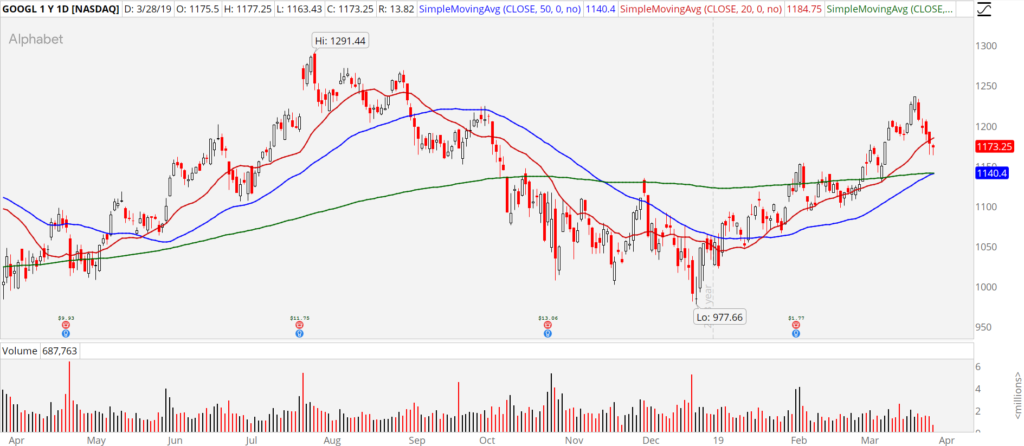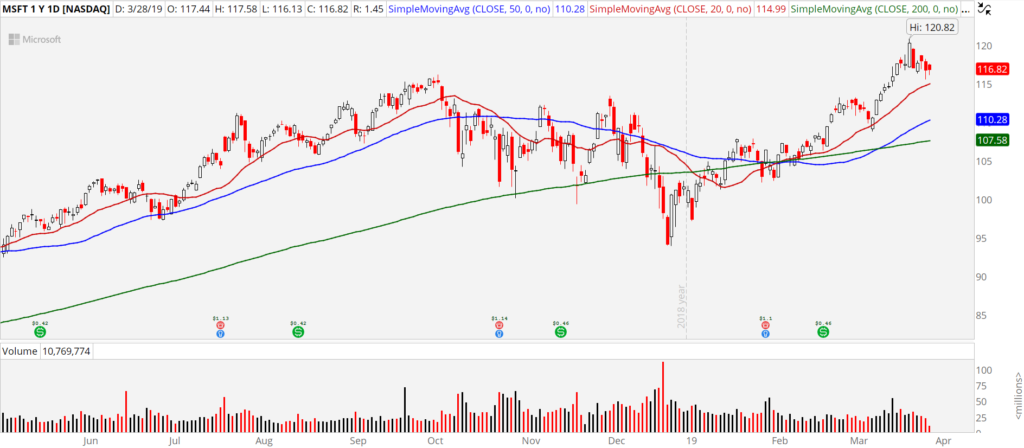
Large-cap tech stocks have led the great market rebound of 2019. Today we’ll look at three of the top stocks to trade in the sector.
Chart watchers are detectives seeking clues. These signals reveal the path of least resistance for prices and enable traders to discover attractive buy points that offer low risk and high reward. In analyzing the technology sector, two items stand out that suggest it should maintain a leadership role.
First, unlike the S&P 500 and Russell 2000, the tech-heavy Nasdaq saw increasing momentum on its last upswing. Trends with growing momentum have a higher likelihood of continuation than reversal. The second piece is related to the first: the tech sector’s relative strength. The tech sector’s outperformance is a good omen that should continue attracting performance chasers.
Here are three top stocks to trade.

Click to EnlargeSource: ThinkorSwim
Advanced Micro Devices (AMD)
Advanced Micro Devices (NASDAQ:AMD) is an active trader’s dream stock. Its massive volatility delivers quick profits to those on the right side of the trend. And it exhibits clean trending behavior responding well to common support and resistance zones.
Last week’s breakout resulted in a rapid three-day 20% surge amid heavy accumulation. Spectators who missed it now have a second chance. With this week’s pullback, AMD stock has now returned to the scene of the crime. This is as good a buy-the-dip pattern as there is. Watch for signs of an upside reversal such as breaking a prior day’s high, then buy.
Options traders might consider selling the May $22 puts for $90 of cash flow per contract.

Click to EnlargeSource: ThinkorSwim
Alphabet (GOOGL)
This year’s uptrend in Alphabet (NASDAQ:GOOGL,NASDAQ:GOOG) has been incredibly orderly. The series of higher pivot lows is consistent, and both the 20-day and 50-day moving averages are rising in bullish fashion. Additionally, the past three upswings have seen strong bullish candles with upside follow through. This type of clean price action has made GOOGL one of the easier stocks to trade of late.
With today’s mild selloff, GOOGL stock is working on its fifth down day in a row. The lower-than-average volume suggests we’re seeing garden-variety profit taking versus widespread distribution. Potential support looms close at $1150 and $1140, so I suspect a bounce is nigh.
If the stock can take out today’s intra-day high ($1,177), then buy the May $1175/$1195 bull call spread for around $5.

Click to EnlargeSource: ThinkorSwim
Microsoft (MSFT)
Microsoft (NASDAQ:MSFT) rounds out today’s trio with a shallow retracement pattern. The software king notched a fresh record high last week — $120.82 — on strong momentum. The reach to new heights came following a high volume breakout of last year’s high water mark.
Given all the bullishness, I see little reason why the current dip won’t get gobbled up like all its predecessors.
Implied volatility is low making long option plays attractive. I like buying the May $115/$125 bull call for around $4.
As of this writing, Tyler Craig held bullish positions in AMD. Check out his recently released Bear Market Survival Guide to learn how to defend your portfolio against market volatility.
Source: Investor Place


